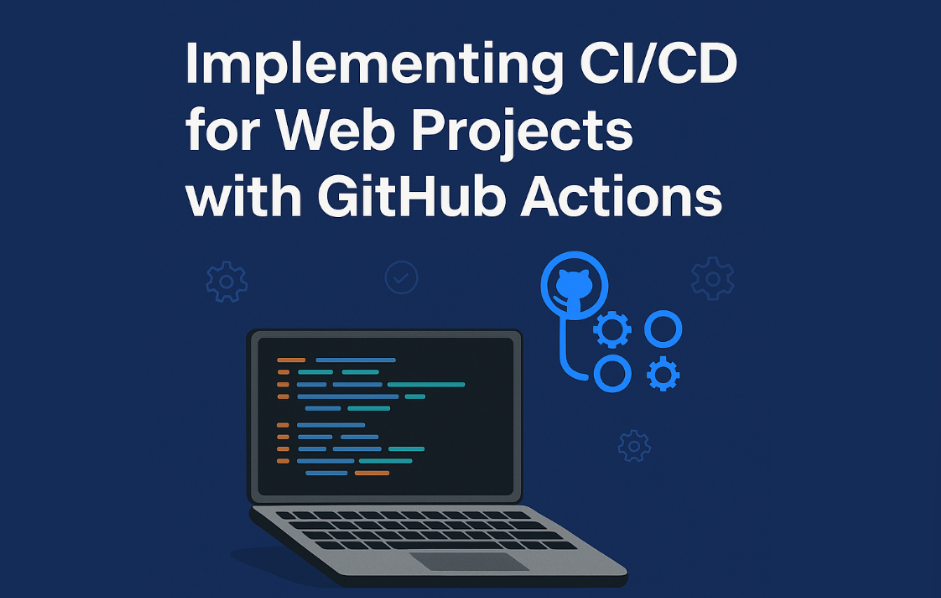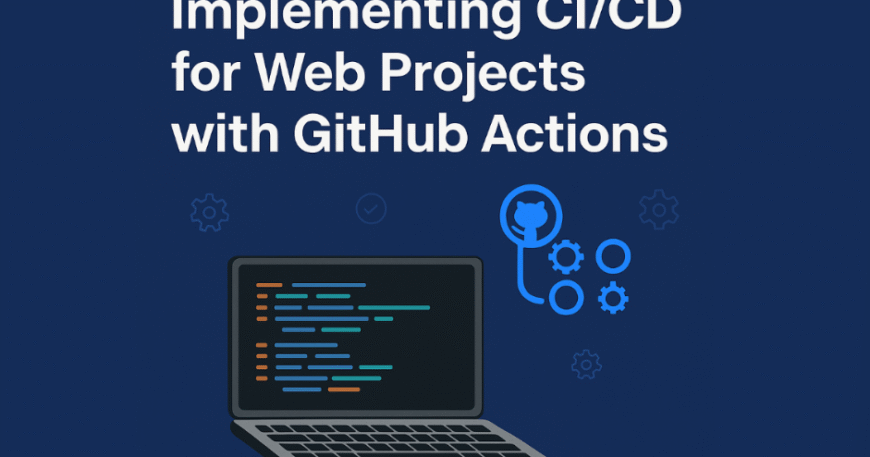
Table of Contents
- The CI/CD Mindset for Web Developers
- Why GitHub Actions Stands Out
- Getting Started: Project Structure and Workflow Files
- Writing Your First Workflow: It’s Easier Than You Think
- Deploying to the Web: From Code to Live Site
- Handling Secrets and API Keys Safely
- Branch Workflows and Real-World Development
- Final Thoughts: The Power of CI/CD in Your Hands
- FAQs
The CI/CD Mindset for Web Developers
CI/CD isn’t just a tech buzzword. It’s a practice that fundamentally shifts how you write and release code. Continuous Integration is all about frequently merging code changes, testing them automatically, and avoiding the classic “it worked on my machine” problem. Continuous Deployment (or Delivery) builds upon that by taking successful builds and deploying them straight to your users—no manual steps required.
For web developers, this means fewer fire drills, more time focusing on features, and confidence that your changes won’t crash the production site. It’s like turning your codebase into a self-healing, self-deploying machine.
Why GitHub Actions Stands Out
GitHub Actions is tightly integrated into your GitHub workflow. No plugins. No need to sync with external CI/CD tools. It’s built-in, intuitive, and incredibly powerful. If you’re already pushing code to GitHub, you’re just a few lines of YAML away from automating your development lifecycle.
What sets GitHub Actions apart is its ecosystem. The GitHub Marketplace is full of prebuilt “actions” you can use—from setting up Node.js environments to deploying to Firebase, Netlify, or AWS. Everything is event-driven, meaning you can trigger workflows on pushes, pull requests, releases, or even scheduled cron jobs.
Getting Started: Project Structure and Workflow Files
To kick things off, navigate to the root of your repository and create a folder named .github/workflows. This is where you’ll store your automation scripts, written in YAML files. These files define what should happen, when it should happen, and how.
For a basic web project, your workflow might install dependencies, run tests, build the project, and deploy it. You define these steps once, and they repeat on every trigger—keeping your app healthy and always deploy-ready.
Writing Your First Workflow: It’s Easier Than You Think
Here’s the magic: workflows are just human-readable YAML files. You don’t need to be a DevOps wizard. A simple workflow might run tests every time you push code. You specify the operating system, use prebuilt actions like checkout, and run shell commands—just like you would on your terminal.
For example, a Node.js project might install dependencies with npm install, run tests with npm test, and build with npm run build. You can include all of this in your .yml file, and GitHub Actions will take care of it whenever you push code to the repository.
This not only catches bugs early but also ensures that your build is always clean and consistent across environments. No more “it works on my machine” headaches.

Deploying to the Web: From Code to Live Site
Once your code passes tests and builds successfully, you’ll want to deploy it. GitHub Actions can deploy to a variety of platforms—GitHub Pages, Vercel, Netlify, Firebase, AWS, and more.
For static sites, GitHub Pages is an excellent choice. Using an action like peaceiris/actions-gh-pages, you can deploy your site with just a few lines. For more complex applications, tools like Netlify CLI or Vercel’s deployment APIs make it seamless to push your app live—directly from your GitHub workflow.
By automating deployment, you eliminate the risk of forgetting steps, breaking the build, or pushing half-baked changes. It becomes part of the development rhythm.
Handling Secrets and API Keys Safely
Security is crucial in any deployment pipeline. GitHub Actions allows you to store sensitive data—like API keys, tokens, and credentials—in encrypted Secrets. You can reference them securely in your workflow using ${{ secrets.YOUR_SECRET_NAME }}.
This ensures that sensitive information doesn’t leak into logs, files, or public repositories. Always remember: never hardcode your keys, and double-check permissions on your workflows.
Final Thoughts: The Power of CI/CD in Your Hands
Implementing CI/CD with GitHub Actions doesn’t require a full-time DevOps engineer or a six-month learning curve. Once you’ve set up your first workflow, you’ll wonder how you ever lived without it. Your productivity will shoot up, your code will become more reliable, and your deployment process will be as smooth as butter.
For web developers especially, this means you get to focus on building cool stuff—while GitHub Actions handles the repetitive backend tasks in the background. It’s like having an extra teammate who never takes a break, never forgets a step, and never complains.
FAQs
Q1: Is GitHub Actions free to use?
Yes! It’s free for public repositories. For private repositories, GitHub provides a decent number of free minutes per month, which is usually enough for small to mid-sized projects.
Q2: What if I don’t use Node.js or React?
GitHub Actions works with any language or framework—Python, Ruby, PHP, Java, Go, and beyond. You just need to define your steps based on your tech stack.
Q3: Can I run workflows only on specific branches?
Absolutely. You can define branches, tags, or events that should trigger a workflow. For example, deploy only when changes are pushed to main.




